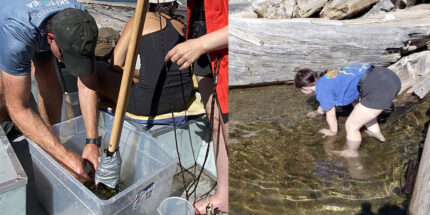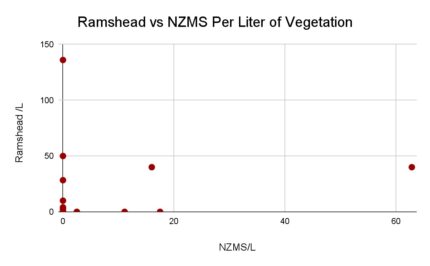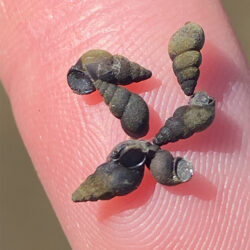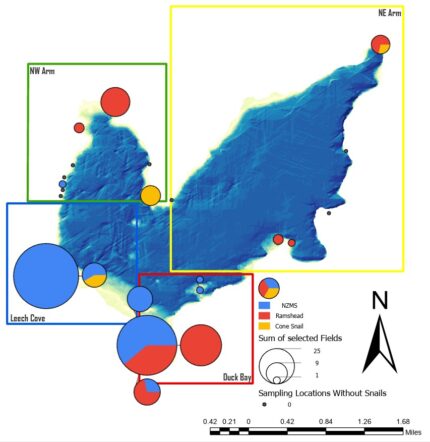By Hailey Germeau, University of Washington, Tacoma
Hailey and Heaven Denham, of the University of Washington, Tacoma, received WALPA’s 2022 Undergraduate Scholarship.
The New Zealand mudsnail (NZMS), introduced to the U.S. in the 1980s, is a priority invasive species in Washington State. It was first detected in 2015 in Spirit Lake, north of Mount St. Helens, where its population is quickly increasing. Studies of this highly invasive species reveal no ecological benefit to Spirit Lake, where it causes a trophic cascade due to its lack of natural predators, voracious herbivory, and interspecies competition with native snail species.
To track the spread of NZMS and its ecological impacts on Spirit Lake, temporal sampling of vegetation and sediment was carried out throughout the lake from July-September 2022 (Fig. 2 and 3). Snail counts were used to calculate snail population densities, spatial and temporal variability, substrate preference, presence in sediments, and interspecies competition.

Fig. 2. (L) Plant rake with vegetation being collected for sampling
Fig. 3. (R) Coring sediment by hand along the littoral zone of the lake
Results of the study revealed evidence of interspecies competition between the NZMS and native species on vegetation samples (Fig. 4), vegetation preferences between species, and possible grazing by NZMS on sediments. Additionally, it was found that NZMS remains spatially isolated along the south shore of Spirit Lake with possible expansion towards the Outlet Tunnel in small numbers, which is likely due to lower volumes of macrophyte and deep waters along the northern shores (Fig. 5). However, the presence of NZMS found in bird droppings from Spirit Lake indicate the possibility that the snails can spread to different areas of the lake through the air.

Fig. 4. Ramshead versus NZMS per liter of vegetation at each sample point, indicating interspecies competition
NZMS spread is of immediate concern with regard to ongoing construction plans by the U.S. Forest Service related to the Spirit Lake tunnel intake gate, including the construction of a shoreline staging area in the heart of NZMS-infested waters. If this project moves forward, it could pose a serious threat of spreading NZMS into the Toutle River, Cowlitz River, and Columbia River drainages while causing irreparable damage to these ecosystems.












